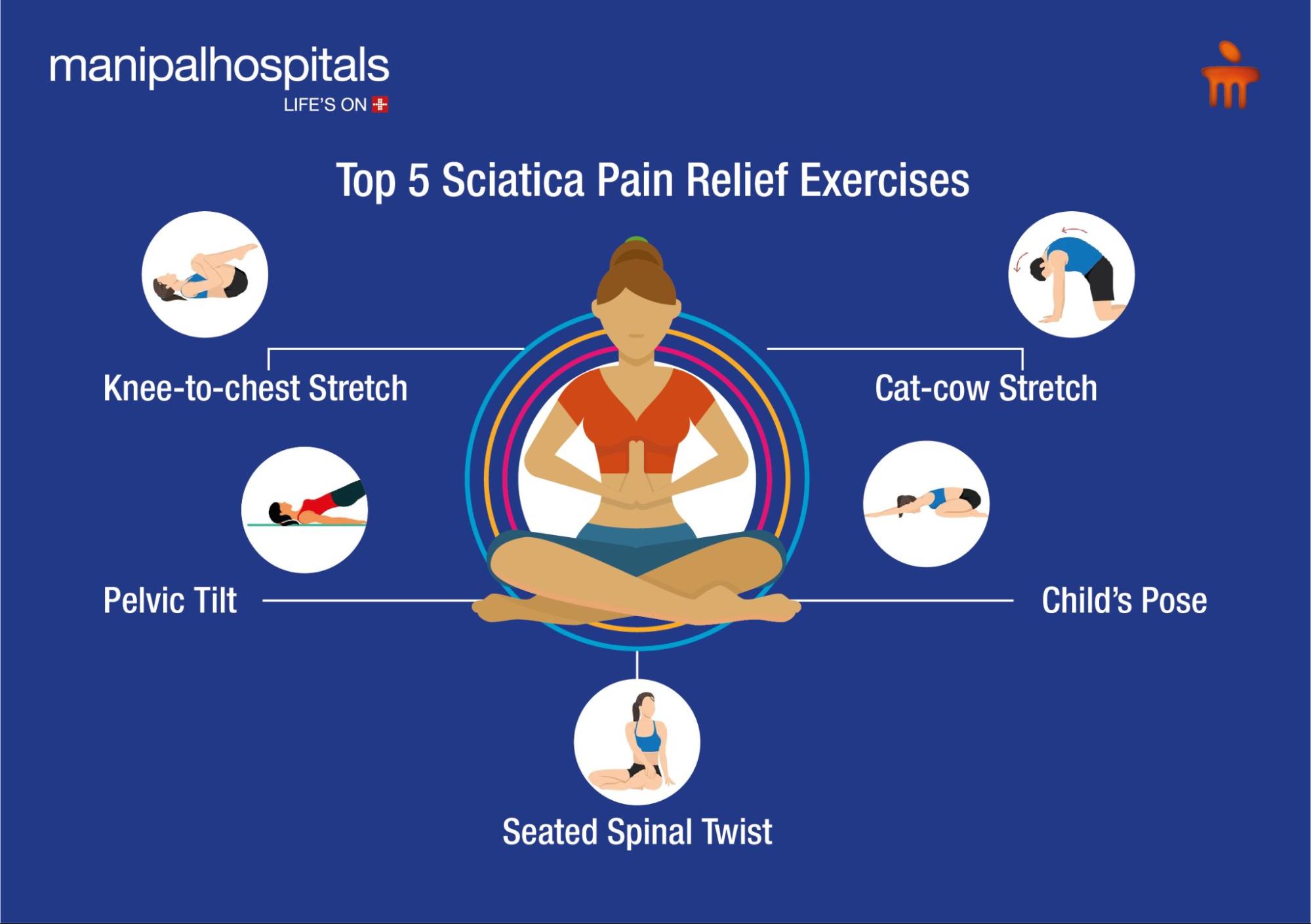
If you’ve ever felt a sharp, shooting pain running from your lower back down your leg, chances are, you’ve had a brush with sciatica pain. And if you’re dealing with it now, we see you. That burning, tingling, can’t-sit-for-more-than-10-minutes kind of discomfort isn’t just annoying; it can interfere with everything from walking to sleeping.
But the good news? There’s help, and sciatica pain relief is possible with the right care, some simple at-home tips, and consistent movement. Let’s break it down.
Synopsis
What is Sciatica Pain?
Sciatica pain isn’t a condition in itself — it’s a symptom of something pressing on the sciatic nerve, the longest nerve in your body. This nerve starts in your lower back and travels down each leg. When something like a slipped disc or a tight muscle compresses it, you feel it. And oh, you’ll know it. Whether it’s a dull ache or an electric jolt shooting through your leg, that’s sciatica pain.
People often ask, “What is sciatica pain caused by?” Here are some common triggers:
-
Herniated or bulging disc in the spine
-
Spinal stenosis (narrowing of the spinal canal)
-
Piriformis syndrome — when a small muscle in your buttocks gets tight and pinches the nerve
-
Pregnancy, due to posture shifts and added pressure
-
Injury or accidents affecting the lower back
So yes, that pain you’re feeling? It has a reason — and we call it the sciatica pain reason.
How Do You Know It’s Sciatica?
You might have sciatica pain symptoms if you:
-
Feel pain radiating from your lower back to your hip, buttock, or down one leg
-
Can’t sit, stand, or walk without discomfort
-
Find that the pain worsens after long periods of sitting
Sound familiar? You're not alone. Millions experience sciatica pain, and most recover fully, especially with early intervention.
How to Relieve Sciatica Pain: What Works?
Whether you're looking for medical help or hoping for some sciatica pain treatment at home, here’s what works (and what doesn’t):

1. Movement is Medicine: Exercises for Sciatica Pain
Don’t just rest and hope it goes away. Gentle, targeted movement is one of the best ways to find long-term sciatica pain relief.
Here are a few tried-and-tested sciatica pain relief exercises you can start with:
-
Knee-to-chest stretch – Loosens the lower back
-
Pelvic tilt – Builds core strength
-
Cat-cow stretch – Mobilises your spine gently
-
Seated spinal twist – Releases tension along the back and hips
Make sure to avoid heavy lifting, bending and twisting suddenly, or high-impact cardio until your doctor clears it.
2. Try a Sciatica Pain Relief Massage
Massage isn’t just about relaxation — it can help reduce nerve pressure, loosen tight muscles, and boost blood flow. A sciatica pain relief massage focuses on the lower back and glutes, where tension tends to build up and irritate the sciatic nerve.
3. Find the Right Sciatica Pain Medicine
When the pain flares up, medications may help. Some of the best medicines for sciatica pain include:
-
Over-the-counter pain relievers (like ibuprofen)
-
Muscle relaxants
-
Nerve-pain medications (prescribed by your doctor)
-
In more serious cases, steroid injections
Please don’t self-medicate. A doctor can help tailor the right sciatica pain treatment for you.
4. Home Remedies That Make a Difference
For those who prefer natural approaches, here are some gentle sciatica pain treatment at home strategies:
-
Alternate between hot and cold compresses on the lower back
-
Maintain good posture while sitting
-
Use ergonomic pillows or back supports
-
Take regular walking breaks — even around the room counts
Small lifestyle tweaks can make a big impact over time.
When Should You See a Doctor?
Most cases of sciatica pain improve within a few weeks, but if the pain is severe, constant, or comes with numbness or weakness in both legs, you should seek medical attention immediately. Loss of bladder or bowel control? That’s an emergency — don’t wait.
You’re Not Alone — And You Don’t Have to Live in Pain
Whether your sciatica pain is new or something you’ve struggled with for a while, remember: help is available, and healing is possible. From sciatica pain relief exercises and sciatica pain medicine to supportive therapies and expert care, our team is here to guide you every step of the way.
FAQ's
If you’re in the middle of a flare-up, the quickest way to get relief from sciatica pain usually involves a mix of simple steps: take it easy for a bit, apply heat or cold packs to the lower back, do some gentle stretches, and consider over-the-counter pain relievers — but only if they’re safe for you. Some people also find that sciatica pain relief massages or physiotherapy sessions help speed things up.
Everyone’s experience is a bit different, but in most cases, sciatica pain gets better within 4 to 6 weeks, especially with the right care. That could mean light activity, stretching, and posture correction. If it lasts longer or keeps coming back, it’s a good idea to check in with your doctor. You might need a tailored sciatica pain treatment plan.
Yes, sometimes it can. Many people recover without needing any major medical treatment. But if the pain gets worse or keeps interrupting your daily routine, don’t ignore it. Getting help early could prevent it from turning into a long-term issue and get you back on your feet faster with the right sciatica pain relief strategies.
While most cases of sciatica pain aren’t dangerous, there are a few red flags you shouldn’t ignore. If you notice sudden weakness in one or both legs, numbness around your groin or buttocks, or trouble controlling your bladder or bowels, seek medical help right away. These could be signs of a rare but serious condition called cauda equina syndrome that needs immediate attention.
Certain movements and habits can make sciatica pain worse. Try to avoid sitting or lying down for too long, lifting anything heavy, twisting your back suddenly, or slouching — especially when working at a desk or driving. Instead, focus on gentle movement, daily stretches, and low-impact activity. Some excellent sciatica pain relief exercises can help you recover without making things worse.
Good sleep posture can make a big difference. Try lying on your back with a pillow under your knees to keep your spine neutral. If you’re more of a side sleeper, place a pillow between your knees to take pressure off your lower back. Avoid sleeping on your stomach, as it can put a strain on your spine and make sciatica pain worse through the night.




















 6 Min Read
6 Min Read













